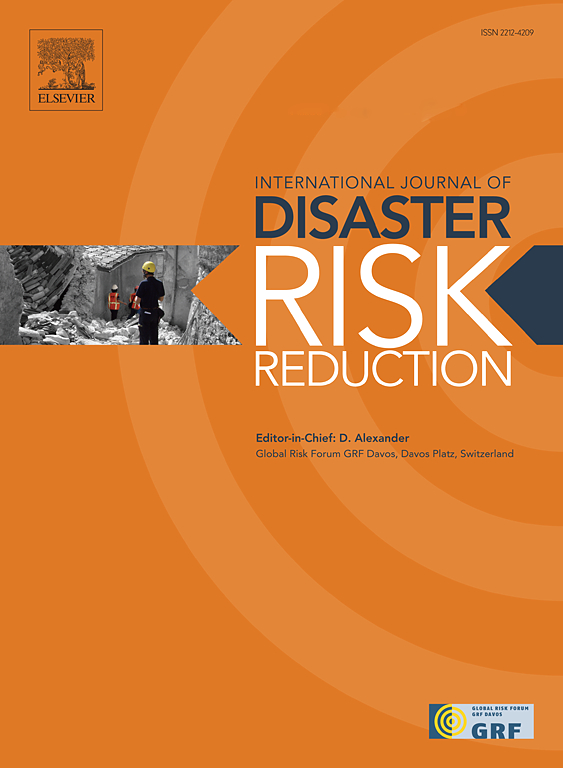Optimizing evacuation paths using agent-based evacuation simulations and reinforcement learning
IF 4.2
1区 地球科学
Q1 GEOSCIENCES, MULTIDISCIPLINARY
International journal of disaster risk reduction
Pub Date : 2025-02-01
DOI:10.1016/j.ijdrr.2024.105173
引用次数: 0
Abstract
Evacuation path optimization during major flooding events is crucial for minimizing casualties. Notably, recent studies have underscored the importance of considering multiple factors, such as inundation timing, road congestion, and evacuation destination capacities, during path optimization for effective flood evacuation planning. Drawing insights from these studies, the present study developed a novel methodology to optimize evacuation paths for individual evacuees by integrating agent-based tsunami evacuation simulations with Q-learning, a well-known reinforcement learning technique. The effectiveness of the proposed methodology was tested in a tsunami-prone coastal area. Furthermore, to comprehensively assess the performance of the methodology under varying conditions, several scenarios with diverse reward settings and evacuation start times (5, 10, and 15 min after the earthquake) were simulated. The results demonstrated that the proposed methodology significantly reduced the number of casualties by dispersing evacuees across wide areas, alleviating road congestion, and guiding evacuees toward evacuation destinations with adequate capacity. Notably, when rewards for reaching evacuation destinations were set significantly higher than typical inundation times, and differences in inundation onset times between nodes were integrated into reward calculations, the proposed methodology achieved mortality rate reductions of approximately 60 % compared to the traditional shortest-path methodology.
求助全文
约1分钟内获得全文
求助全文
来源期刊

International journal of disaster risk reduction
GEOSCIENCES, MULTIDISCIPLINARYMETEOROLOGY-METEOROLOGY & ATMOSPHERIC SCIENCES
CiteScore
8.70
自引率
18.00%
发文量
688
审稿时长
79 days
期刊介绍:
The International Journal of Disaster Risk Reduction (IJDRR) is the journal for researchers, policymakers and practitioners across diverse disciplines: earth sciences and their implications; environmental sciences; engineering; urban studies; geography; and the social sciences. IJDRR publishes fundamental and applied research, critical reviews, policy papers and case studies with a particular focus on multi-disciplinary research that aims to reduce the impact of natural, technological, social and intentional disasters. IJDRR stimulates exchange of ideas and knowledge transfer on disaster research, mitigation, adaptation, prevention and risk reduction at all geographical scales: local, national and international.
Key topics:-
-multifaceted disaster and cascading disasters
-the development of disaster risk reduction strategies and techniques
-discussion and development of effective warning and educational systems for risk management at all levels
-disasters associated with climate change
-vulnerability analysis and vulnerability trends
-emerging risks
-resilience against disasters.
The journal particularly encourages papers that approach risk from a multi-disciplinary perspective.
 求助内容:
求助内容: 应助结果提醒方式:
应助结果提醒方式:


